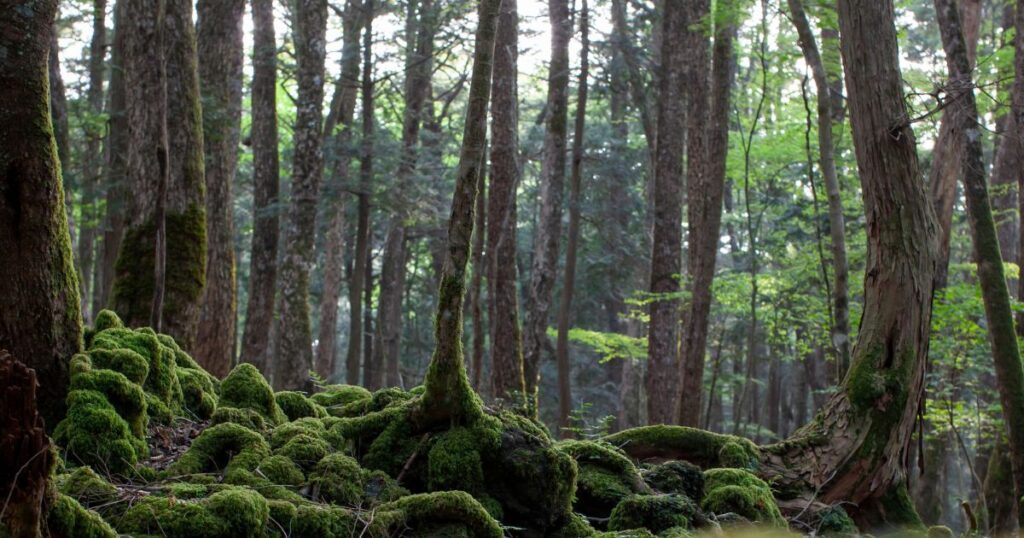Nestled northwest of the iconic Mount Fuji, you’ll find Japan’s suicide forest, Aokigahara, also known as the ‘Sea of Trees.’ This forest is unlike any other. It’s not just a place of natural beauty but layered with deep stories and mysteries.
Table of Contents
What’s Aokigahara?
Aokigahara’ can be broken down into its constituent parts in Japanese: ‘Ao’ means blue or green, ‘ki’ refers to trees, and ‘gahara’ means a plateau or a moor.
So, the name Aokigahara describes a ‘Sea of Trees on a Plateau,’ which is an apt descriptor for this dense, expansive forest. The forest is often called the ‘Sea of Trees’ due to its lush, green canopy that stretches as far as the eye can see.
Aokigahara is huge, covering over 13.5 square miles. But size isn’t what makes this forest famous—or infamous. This forest is notorious for being a suicide destination, ranking second after the Golden Gate Bridge in San Francisco.
It’s not just a forest filled with tragic stories, though. Ancient Japanese myths tell us that yūrei, or vengeful spirits, roam here. This eerie side of Aokigahara even inspired a Hollywood horror movie in 2016 called The Forest.
History:
Aokigahara Forest is near Mount Fuji in Yamanashi, close to Shizuoka. Both areas are on Honshu, Japan’s main island.
The area where Aokigahara now stands was formed around 1,200 years ago following a massive eruption from Mount Fuji. The lava flow from this eruption cooled and solidified, creating a porous layer of volcanic rock. Over the centuries, the soil gradually formed on top of this volcanic base, and a forest took root. The unique geological underpinnings contribute to an uneven, cavernous landscape that is difficult to navigate.
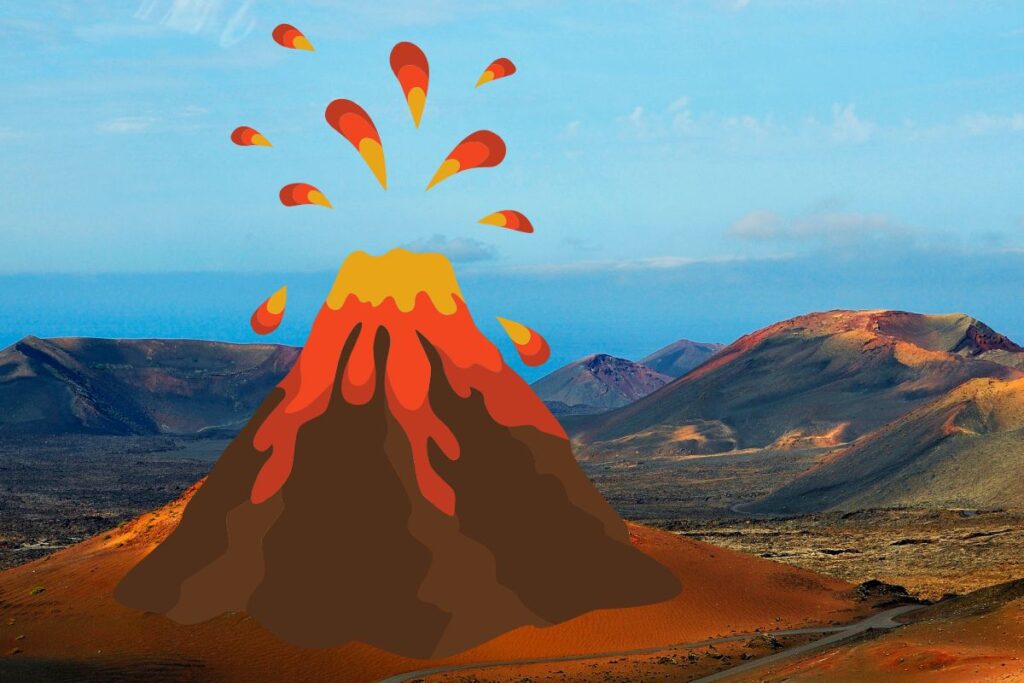
The forest’s substrate retains a lot of water, resulting in a very damp environment. This also creates unique vegetation; the forest is rich in different types of trees, shrubs, and smaller plants. The density of the trees and the absence of wildlife contribute to a notably quiet environment, which has both intrigued and unnerved visitors.
Aokigahara has deep-rooted cultural connections to Japanese history and mythology. Folk tales and legends often describe the forest as haunted by ‘yurei,’ or ghosts from Japanese folklore. This has contributed to the forest’s eerie reputation and may have served as the backdrop for its more modern reputation as a site for suicides.
Despite its dark side, Japan’s suicide forest, Aokigahara, is still a beautiful natural spot with great views of Mount Fuji, and there are efforts to make it safer for everyone.
Why Do People Go There?
In Japan, attitudes towards suicide are complicated. Samurais would commit seppuku, a historical practice to preserve their honor, which still influences people today. While this doesn’t happen today, the idea still affects how people view suicide. Japan’s government knows how serious this issue is and has stepped in to help.
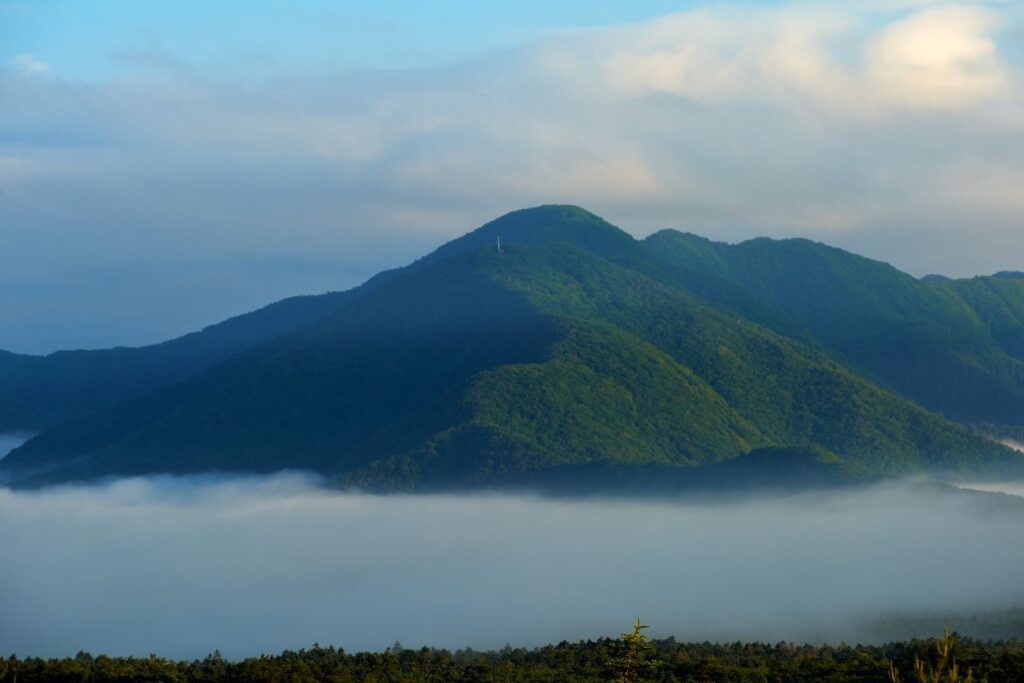
When you walk through the forest today, you’ll see signs encouraging hope and offering helplines. You might even see police patrols. These are all efforts to help people reconsider their devastating decision.
What’s it Like Inside?
Aokigahara is not your typical forest. Even setting aside its darker reputation, the environment itself is mysterious. The forest is so dense that it creates its own microclimate, blocking wind and muffling sound, which lends an eerie stillness to the atmosphere. Wildlife is surprisingly sparse, adding to the sense of solitude that engulfs you as you step inside.
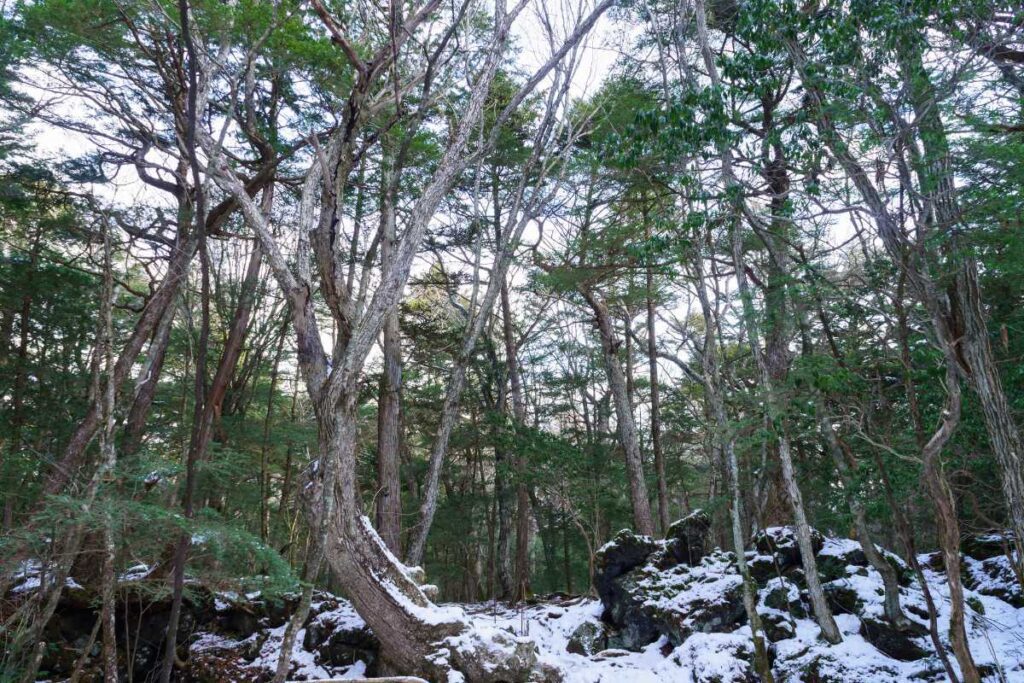
The place is also an electronic black hole—compasses go haywire, and gadgets often fail. This unique characteristic has sparked both scientific curiosity and imaginative speculation. Several books, such as “Tower of Waves” and “The Complete Manual of Suicide,” have used this forest as their backdrop, furthering its enigmatic reputation.
Local Myths and Legends:
The forest isn’t just a location; it’s a character in local folklore. One of the more chilling myths is ubasute, the practice of leaving the elderly in remote areas to die. Although no concrete evidence supports that the practice was widespread, the tale persists in local stories.
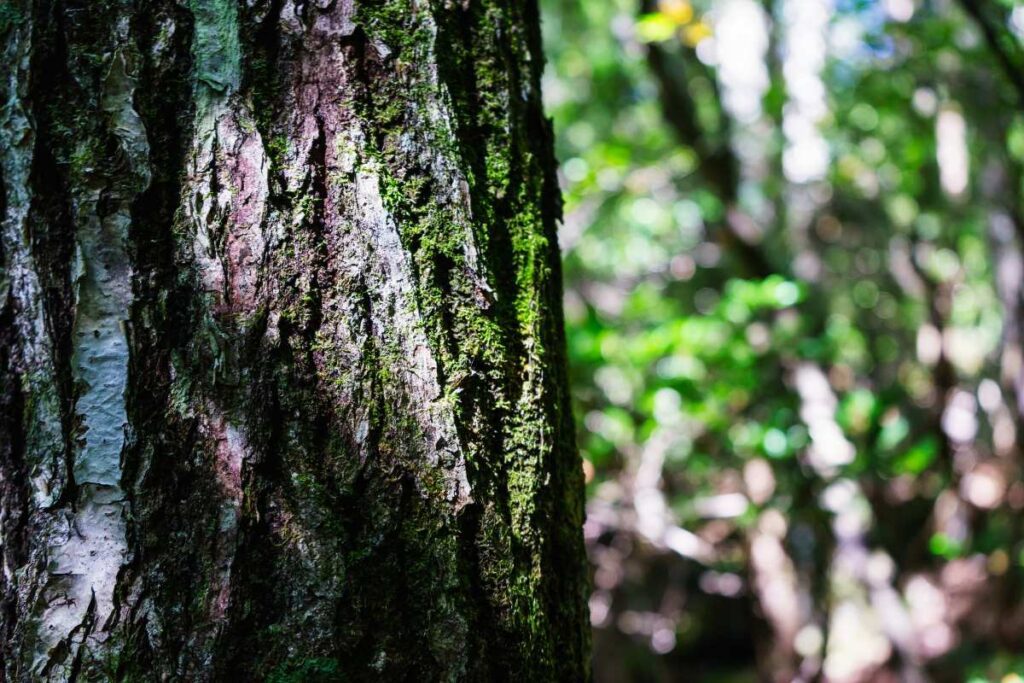
This myth suggests that the spirits of those abandoned still wander the forest, adding to its spiritual complexity. Many believe these spirits could be vengeful or sorrowful, contributing to Aokigahara’s haunted reputation and making it a hotbed for supernatural phenomena.
People Who Care:
Amidst the darkness, there are rays of light—volunteers who patrol the area, looking to help those who might be contemplating life-ending decisions. These individuals come from various backgrounds but share a common goal: to offer a moment of pause, a listening ear, and perhaps a change of heart.
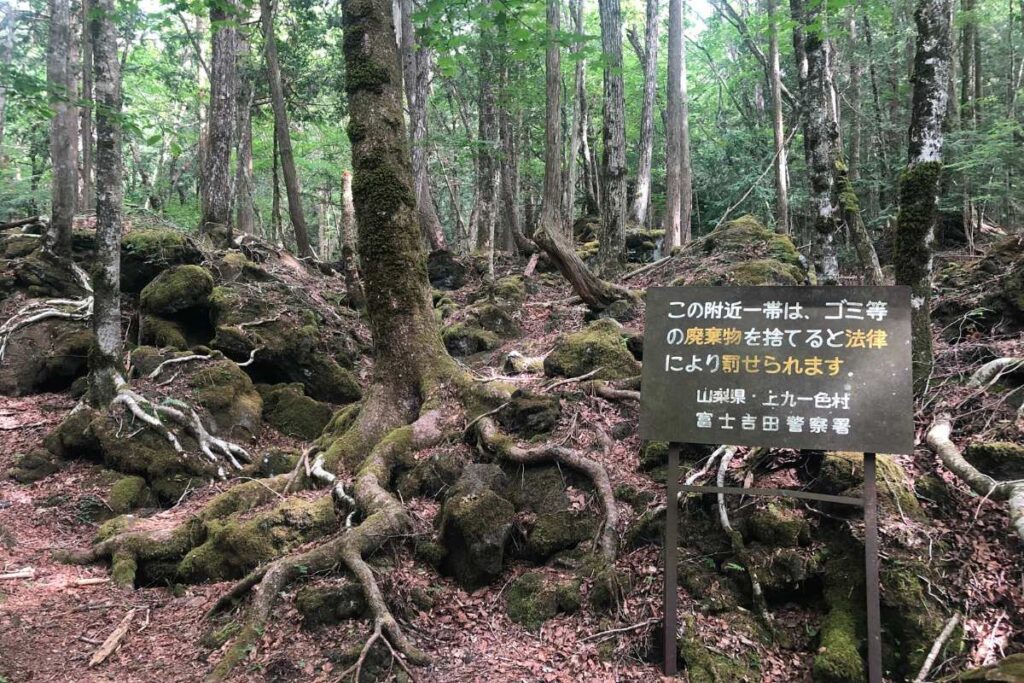
Camping is allowed in Japan’s suicide forest, but it’s seen with suspicion. If you set up a tent, expect a volunteer or police officer to stop by. They are there to check on your well-being, subtly affirming that each life has value, even in a place that many have chosen for their final moments.
It’s Not All Dark:
While it’s hard to ignore Aokigahara’s grim aspects, it’s also a place of staggering natural beauty. Its proximity to Mount Fuji offers breathtaking vistas, and the forest itself is a marvel of nature’s creation, teeming with ancient trees and distinctive plants.
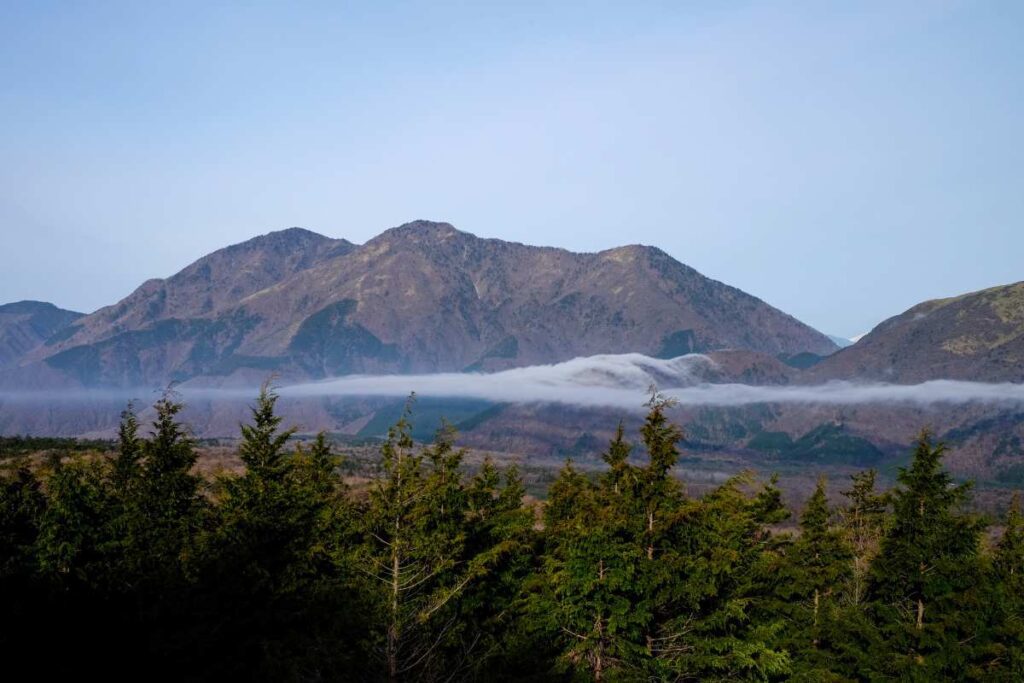
If you visit, do so with respect. Stick to the designated paths and heed any signs. The Internet is full of unsettling tales and images of Aokigahara, but it’s also a place where you can experience the awe-inspiring power of nature if you treat it with the reverence it deserves.
An Enigmatic Haven:
People are drawn to Japan’s suicide forest, Aokigahara, for a variety of reasons. Beyond its haunting reputation, it’s a mesmerizing natural sanctuary. The forest feels like a different world, where the trees are so dense they seem to absorb sound, creating an enveloping silence. It’s a place where you can get lost in thought while being surrounded by stunning shades of green and the grandeur of Mount Fuji looming in the distance.
If you’re a nature lover, Japan’s suicide forest, Aokigahara, offers a rare solitude that’s becoming increasingly hard to find. It’s a forest where every twist and turn reveals another picture-perfect moment—twisted roots giving way to a carpet of moss and narrow sunbeams breaking through the canopy to dance on the forest floor.
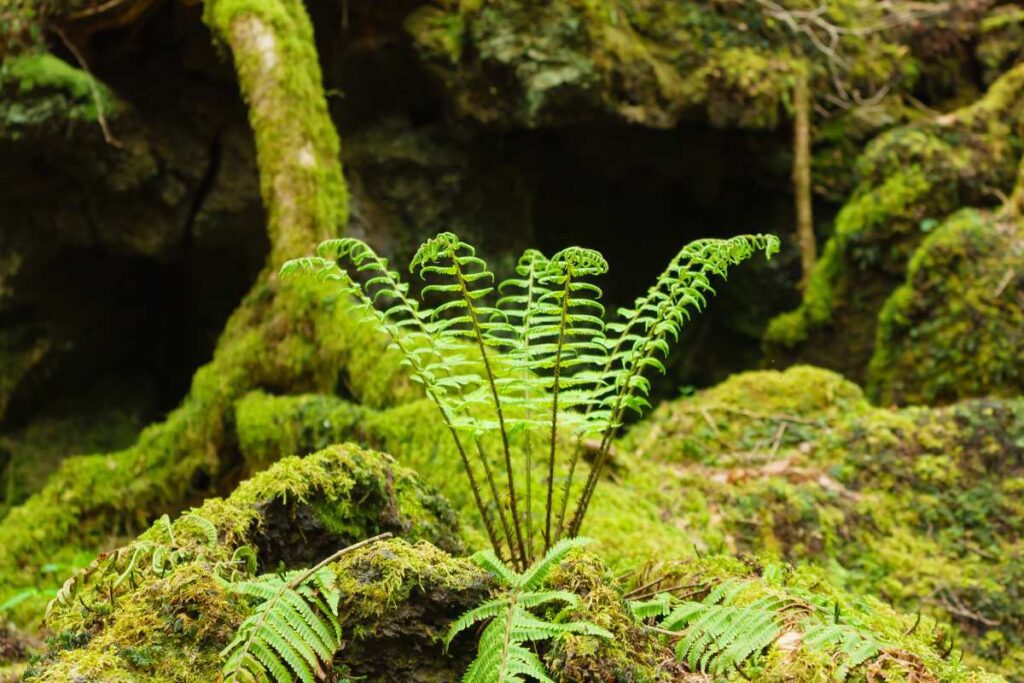
So, if you want to experience something profound and captivating, Aokigahara offers a surreal escape into nature that challenges and enriches the soul.
It’s a place of serene beauty, fascinating folklore, and a haunting history that adds depth to its allure. Visit responsibly, and you’ll find it’s a forest that’s much more than the sum of its myths.
Two Famous Caves:
The Narusawa Ice Cave and Fugaku Wind Cave are fascinating geological features near the Aokigahara Forest. They offer a different aspect of the area’s natural beauty and are popular stops for visitors exploring the region.
a) Narusawa Ice Cave:
Imagine a super cool cave that stays icy all year round, thanks to a volcano from Mount Fuji ages ago. Inside, you’ll find vast columns of ice and frozen ponds.
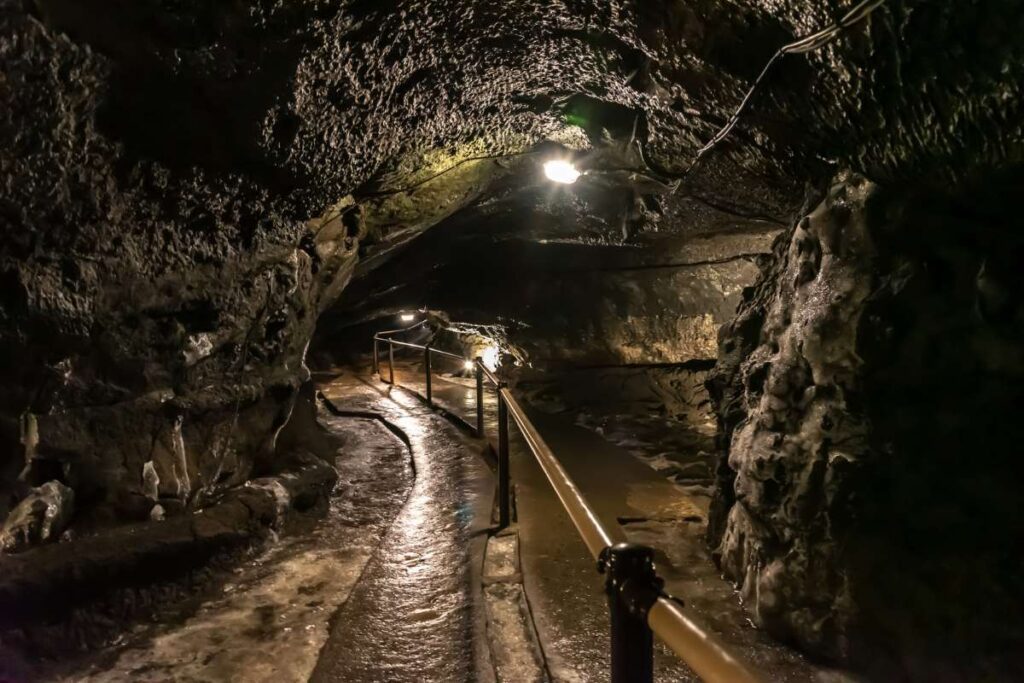
Even in summer, you’ll feel like you’re inside a fridge! This cave is so special that it’s officially recognized as a natural treasure of Japan. It’s a great place to learn about how the Earth has changed over time.
b) Fugaku Wind Cave:
Here’s another cave made by Mount Fuji’s volcano, but this one’s all about the wind. The air inside is always cool, around 3°C (37°F). You’ll feel a breeze blowing through the cave, which is why it’s called the ‘Wind Cave.’ Long ago, people even used this cave as a natural fridge to keep silkworm eggs cold. You’ll see cool rock shapes like ‘rope lava’ inside.
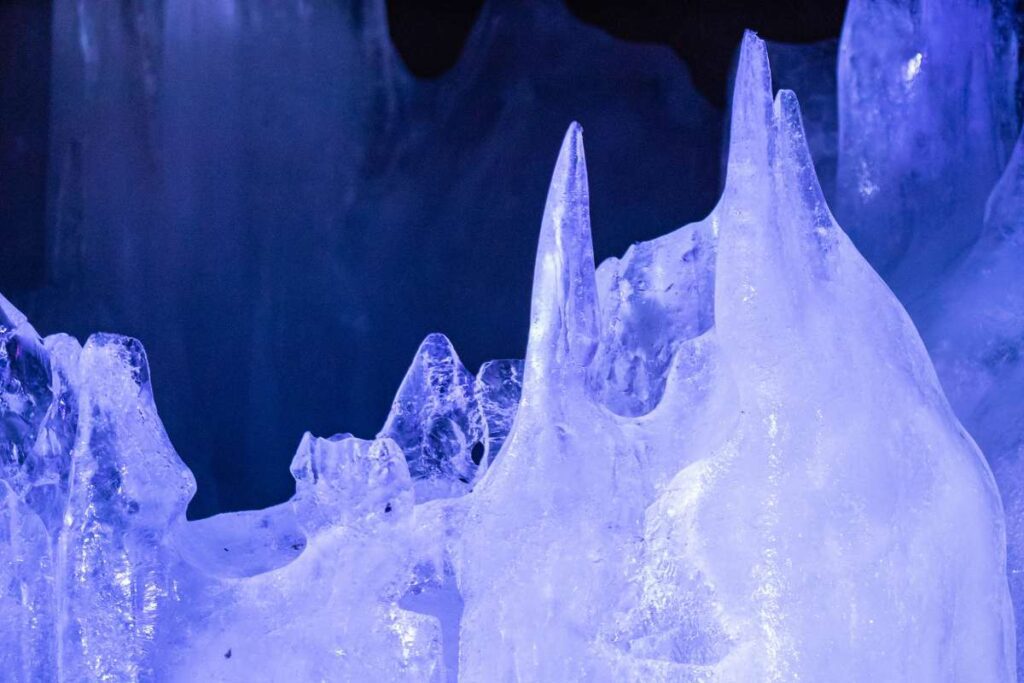
Both caves are easy to get to and walk around in. They give you a peek into the area’s past and make your trip to Aokigahara Forest even more exciting. These caves are a must-see whether you’re into rocks and history, want to cool off, or just love trying new things.
Things to Take:
Aokigahara Forest, also known as the ‘Sea of Trees,’ necessitates taking safety precautions due to its dense foliage and tricky terrain. The forest has a reputation for being easy to get lost in, so survival materials are essential for a safe experience.
Here’s a list of recommended items:
Map and Compass: GPS systems can be unreliable in the forest, so an old-school map and compass are essential.
Fully Charged Phone with Portable Charger: While signals can be spotty, a phone could be crucial in case of an emergency.
First Aid Kit: Include bandages, antiseptics, pain relievers, and any personal medications you may need.

High-Calorie Food: Energy bars, trail mix, or other non-perishable food items can provide crucial sustenance.
Water: Carry at least two liters of water and consider a portable filtration system if you plan to stay longer.
Bright Clothing: Visibility can be poor in the dense forest, so wear bright clothing to make yourself more visible.
Emergency Whistle: An easy way to signal for help if you’re lost or in danger.
Flashlight and Extra Batteries: Essential for navigating the forest, especially if you’re caught there after dark.
Multi-tool or Swiss Army Knife: Useful for a variety of tasks, from cutting things to potential repairs.
Fire Starter: Waterproof matches or a fire starter can help you start a fire for warmth or signal for help.
Rope or Paracord: Helpful for climbing, building a shelter, or even marking your trail.
Emergency Blanket: Lightweight and compact, this can provide needed warmth in a pinch.

Never go alone.
Besides, always notify someone about your trip details, including when you’re expected to return. A guided tour is strongly recommended for those unfamiliar with the forest. Please exercise caution and respect for the forest and its history.
Stay Safe:
Safety is a significant concern when exploring Aokigahara. The forest’s magnetic anomalies can play havoc with electronic devices. GPS systems can go astray, and phone signals can fade, leaving you isolated in an already isolating environment.

Because of these challenges, low-tech methods for navigation have become crucial. Consider marking your path with biodegradable tape or string if you venture in. This simple precaution can be a literal lifesaver, helping you retrace your steps if you get lost.
Final Thoughts:
Aokigahara forest is a paradox. It’s both haunting and beautiful, filled with sorrow but also peace. As you navigate its complexities, remember the importance of showing kindness and understanding to those who may be struggling with their own battles.
Let’s appreciate Japan’s suicide forest, Aokigahara, for all it is—a place of immense natural beauty with a rich, if complicated, story.
If you’re ever disappointed with your struggle for any reason, please check my Kindle.
My humble request read it before you make your final decision. I’ve passed my dark days and decided to live for others, not for me. I believe you’ll do too.
How to access it from Tokyo?
By Train:
- Shinjuku to Otsuki: Start your journey by taking the JR Chuo Line from Shinjuku Station to Otsuki Station. This leg usually takes about 85 minutes.
- Otsuki to Kawaguchiko: After arriving at Otsuki, transfer to the Fujikyu Railway Line bound for Kawaguchiko Station. This segment will take approximately 45-50 minutes.
- Kawaguchiko to Aokigahara: From Kawaguchiko Station, local buses will take you to key entry points into Aokigahara Forest, such as the Narusawa Ice Cave or the Fugaku Wind Cave. The bus ride typically takes 30-40 minutes.
By Bus:
- Direct from Tokyo: Some operators offer direct bus services from Tokyo to Kawaguchiko Station or even closer to Aokigahara Forest. These are usually tour buses, which might include stops at other tourist attractions.
- Kawaguchiko to Aokigahara: Similar to the train option, once you reach Kawaguchiko Station, you can catch local buses that will drop you off at key entry points like the Narusawa Ice Cave or the Fugaku Wind Cave.
Taking the train offers a mix of speed and scenic views, but you have to transfer at least once. Conversely, the bus may provide a more direct route but is often subject to traffic conditions. Choose the option that aligns best with your travel preferences.
